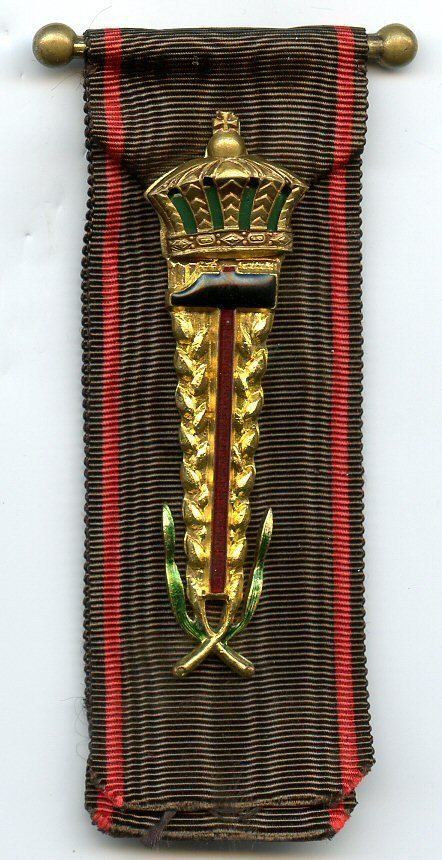Type Labour award Established 12 November 1948 | Status Active | |
 | ||
Eligibility Workers employed in Belgium Awarded for Especially meritorious work, skills and commitment to a profession | ||
The Honour Badge of Labour (Dutch: Ereteken van de Arbeid, French: Insigne d'Honneur du Travail) is a Belgian award aiming at rewarding especially meritorious workers for their skills and commitment to their profession. It is awarded by Royal Decree on a proposal from the Royal Institute of the Elites of Labour (Koninklijk Instituut der Eliten van de Arbeid in Dutch, Institut Royal des Elites du Travail in French). The award was officially created in 1948 on the basis of earlier badges awarded to meritorious workers during labour fairs as early as 1847.
Contents
Classes
The Honour Badge of Labour is issued in five classes:
The award of the Honour Badge of Labour also grants the awardee the title of Laureate of Labour (Laureaat van de Arbeid in Dutch, Lauréat du Travail in French).
Insignia
The ribbon of the Honour Badge of Labour is dark brown (to represent the earth) with one thin vertical orange stripe on each side (representing fire). In addition, the ribbon of the Silver Badge has a thin silver stripe on the inside of each orange stripe. This stripe is gold for the ribbon of the Gold Badge.
The insignia of the Honour Badge of Labour shows a vertical hammer with one ear of corn on each side enamelled in black, yellow and red, and topped by a royal crown, which is bronze, silver of gold depending on the class of the award.
The Honour Deans of Labour wear a collar the color of the ribbon and adorned with golden badges showing a lion's face. The insignia suspended from the collar is a hammer enamelled in red and black with two ears of corn forming the letter "A" for King Albert I.
The Star of Cadet of Labour is an enamelled pin shaped as a five-pointed star showing an anvil and topped with a royal crown.
Award Procedure
Ever year, the Royal Institute of the Elites of Labour selects a number of professional sectors within which the Honour Badge of Labour will be awarded to meritorious workers, and defines sector-specific conditions to receive the award. Individuals within those sectors may submit an application to the Institute, with a file demonstrating compliance with the award criteria and two commendation letters from co-workers (including, if applicable, the candidate's supervisor). On the basis of the application, the Institute decides if the candidate deserves the award. The Badge of Honour is awarded in a public ceremony.
About five professional sectors are selected every year by the Institute, on a rotational basis, from a total of more than one hundred, such as lace makers, butchers, bakers, opticians or members of military aviation.
